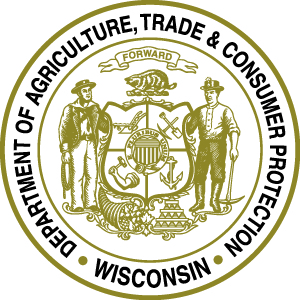Agriculture remains an important part of the Wisconsin economy. Using the data from 2012, this study updates prior analysis of the contribution of agriculture to the Wisconsin economy (Deller 2004; Deller and Williams 2009). For consistency with prior analyses, agriculture is defined as on-farm production and value added food processing. This study is composed of three parts: (1) general historical trends (1998 to 2012) of various measures of economic activity for Wisconsin compared to a national average and averages for the Great Lake States; (2) an economic cluster analysis of various components of Wisconsin agriculture; and (3) an update of the contribution of agriculture to the Wisconsin economy. In addition to examining the contribution of agriculture to the Wisconsin economy in 2012 overall, we also explore the nine (9) sub-regions of Wisconsin as defined by the Wisconsin Agricultural Statistics (NASS regions).
In the most recent study, Deller and Williams (2009) found that Wisconsin agriculture contributes $59.16 billion to total business sales/revenue (about 12.5% of Wisconsin’s total business sales); 353,991 jobs (10% of total Wisconsin employment) and $20.2 billion of total income (about 9% of Wisconsin’s total income).
- In 2012 on-farm activity contributed 153,900 jobs, $5.7 billion to labor income (wages, salaries and proprietor income), $8.9 billion to total income, and $20.5 billion to industrial sales.
- Food processing activity contributed 259,600 jobs, $12.9 billion to labor income (wages, salaries and proprietor income), $21.2 billion to total income, and $67.8 billion to industrial sales.
- Total agricultural activity contributed 413,500 jobs, $18.6 billion to labor income (wages, salaries and proprietor income), $30.1 billion to total income, and $88.3 billion to industrial sales.
- Dairy remains a strong cluster industry for Wisconsin with growing strength in dried-condensed-evaporated milk and butter production. Cheese remains a strength but the sector is growing more slowly than national production. Dairy in aggregate (farming and processing) contributes 78,900 jobs, $3.9 billion to labor income, $7.2 billion to total income, and $43.4 billion to industrial sales.
- Drought conditions for many parts of Wisconsin in 2012, the study period, caused a downward tick in grain farm activity further complicating the dairy and other livestock feeding challenge. For the analysis here the contribution estimates for farming may be conservative.
- The lingering effects of the Great Recession also placed downward pressure on agricultural processing not only in Wisconsin, but across the nation.
Despite the combined effects of the drought of 2012 and lingering effects of the Great Recession, agriculture has risen in importance for the Wisconsin economy accounting for 11.9% of employment, 10.9% of labor income, 10.9% of total income, and 16.1% of industrial sales.
Contribution of Agriculture to the Wisconsin Economy: Updated for 2012
In addition to the full report a series of shorter fact sheets have been created for your use. The information has been drawn from the full report and there is no additional information in the fact sheets that is not contained in the full report. In addition, a complementary set of fact sheets on the food processing industry as an economic cluster is provided here. These complementary fact sheets on food processing focus on the notion of “gaps and disconnects” to strengthen the food processing cluster.
The Wisconsin Dairy Industry
Dairy Farming and Processing’s Contribution to Wisconsin Employment 2012
Dairy Farming and Processing’s Contribution to Wisconsin Labor Income 2012
Dairy Farming and Processing’s Contribution to Wisconsin Total Income 2012
Dairy Farming and Processing’s Contribution to Wisconsin Total Industrial Sales/Revenue 2012
On Farm Activity Contributions
On-Farm Activity’s Contribution to Wisconsin Employment 2012
On-Farm Activity’s Contribution to Wisconsin Labor Income 2012
On-Farm Activity’s Contribution to Wisconsin Total Income 2012
On-Farm Activity’s Contribution to Wisconsin Total Industrial Sales/Revenue 2012
Food Processing Activity Contributions
Food Processing’s Contribution to Wisconsin Employment 2012
Food Processing’s Contribution to Wisconsin Labor Income 2012
Food Processing’s Contribution to Wisconsin Total Income 2012
Food Processing’s Contribution to Wisconsin Total Industrial Sales/Revenue 2012
All of Agricultural Activity Contribution
Agricultural Activity’s Contribution to Wisconsin Employment 2012
Agricultural Activity’s Contribution to Wisconsin Labor Income 2012
Agricultural Activity’s Contribution to Wisconsin Total Income 2012
Agricultural Activity’s Contribution to Wisconsin Total Industrial Sales/Revenue 2012
Support for this work was provided in part by the Office of the Dean, University of Wisconsin-Extension, Cooperative Extension, Office of the Secretary, Wisconsin Department of Agriculture, Trade and Consumer Protection, and the Wisconsin Milk Marketing Board. All errors are the responsibility of the author of the report, Steven Deller.


